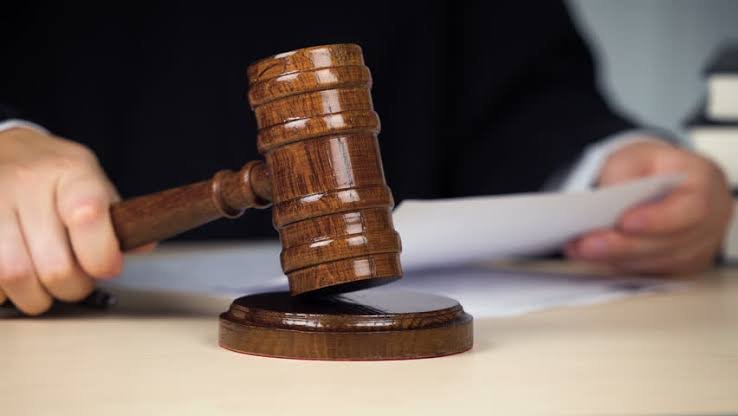This article is written by Farheen Ansari, a student of BBA LLB at Delhi Metropolitan Education.
In any country, there exist laws because it provides rights and duties of every citizen. This law helps them to protect their rights and if someone violates their rights then it is the duty of the citizen to bring that person to the courts of justice.
The term ‘Malice’ means ill-will against the person. And in a legal sense ‘Malicious’ means “wrongful act done intentionally without just cause or excuse.” The term prosecution means “a proceeding in a court of law charging a person with a crime.”
So we can conclude that the term “Malicious Prosecution” means a prosecution on a charge of crime, which is willful, wanton or reckless or against the prosecutor’s sense of duty and right.”
In the case of West Bengal State Electricity Board v. Dilip Kumar Ray, the Court defined the term “malicious prosecution” in the following words: –
“A judicial proceeding instituted by one person against another, from wrongful or improper motive and without probable cause to sustain it is a malicious prosecution.”
In an action for Malicious prosecution, the plaintiff has to prove that
- He was innocent and his innocence was pronounced by the committee before the allegation was made.
- There was a reasonable and probable cause for the prosecution or as it may state that the situation of the case was such as to be in the eyes judge is unpredictable with the existence of reasonable and probe cause.
- That the proceeding for which he complains were initiated in malicious spirit.
ESSENTIAL ELEMENTS OF MALICIOUS PROSECUTION
- He was prosecuted by the defendant.
- The prosecution was instituted without any reasonable and probable cause.
- The defendant acted maliciously and not with the mere intention of carrying the law into effect.
- The proceedings complained of termination in favor of the present plaintiff.
- The plaintiff has suffered damage as a result of the prosecution.
In the case Glinski v. Mclver it was held that ‘it is important to prove the essentials of malicious prosecution. A plaintiff has to prove that he has suffered malicious prosecution by the defendant.
Another case was Manika Das v. Dilip Biswas it was held that “it is important for the plaintiff to prove that he has been suffered by the defendant. In the absence of reasonable and probable cause of the criminal prosecution must also to be established and it must be shown that the defendant instituted the prosecution maliciously, for which the plaintiff suffered damage.”
- PROSECUTION BY DEFENDANT
To prove prosecution by the defendant two elements are required.
- That there was prosecution.
- The prosecution was established by the defendant.
- PROSECUTION
The prosecution should be a criminal prosecution, not civil prosecution. Prosecution means criminal proceedings against a person in a court of law. A prosecution takes place when a criminal charge is made before a judicial officer.
In Nagendra Nath Ray v. Basanta Das Bairagya, after the theft has been committed in the defendant’s house, he informed the police that he suspected the plaintiff of the same. Therefore, the plaintiff was arrested by the police but was subsequently discharged by the magistrate as the final police report showed that there was no evidence connecting the plaintiff with the theft. In a suit for malicious prosecution, it was held that it was not maintainable because there was no prosecution at all as mere police proceedings are not the same thing as prosecution.
COMMENCEMENT OF PROSECUTION
The prosecution is not deemed to have commenced before a person is summoned to answer a complaint.
In the case Madan Mohan Singh v. Bhrigunath Singh In the said case, when a person who was remanded to jail custody for almost 40 days on a charge of dacoity, although ultimately no cognizance was taken of the offense, the Judges held that there was “prosecution” for the purpose of an action for malicious prosecution.
- PROSECUTION SHOULD BE INSTITUTED BY THE DEFENDANT
To file a case against the defendant the plaintiff has to prove that the prosecution should be made by the defendant and if the prosecution is not made by the defendant then the plaintiff can’t ask for justice.
In the case Dattatraya Pandurang Datar v. Hari Keshav, “the defendant filled an FIR to the police regarding the theft at his shop blaming the plaintiff, his servant as being suspected for the theft. After the registration of the case, the police started an investigation. The plaintiff was arrested and remanded by the magistrate, to police custody. On investigation, police didn’t find any clue regarding the plaintiff, and when police didn’t find sufficient evidence the plaintiff was discharged. After bail plaintiff filed a case against the defendant for malicious prosecution but it was held that the essentials of malicious prosecution weren’t there and the defendant did nothing rather than giving information.
- ABSENCE OF REASONABLE AND PROBABLE CAUSE
A suit for malicious prosecution can be filed only when the plaintiff can prove that reasonable and probable cause was absent for the prosecution by the defendant. And if there is reasonable and probable cause then the plaintiff can’t file a case against the defendant.
Reasonable and Probable cause has been defined as “an honest belief in the guilt of accused upon a full conviction, founded upon reasonable grounds, of the existence of circumstances, which assuming them to be true would reasonably leaf any ordinarily prudent man placed in the position of the accused to the conclusion that the person charged was probably guilty of the crime imputed”
In the case Glinski v. Melver it was stated that reasonable and probable cause means “that there must be cause for thinking that the plaintiff was probably guilty of the crime imputed.”
Another case Shiv Shankar Patel v. Smt. Phulki Bai “the respondent had faced the criminal prosecution for 8 years for theft, which revealed to have been harvested and sown by the respondents belonging to the husband of respondent. The prosecution ended the acquittal. it was said to have been launched not with intention of carrying the law into effect, but with an intention which was wrongful in point of fact, the respondent was awarded with Rs 10000 for the loss of reputation in the society.
- MALICE
It is also for the plaintiff to prove that the defendant acted maliciously in prosecuting him. The term ‘malice,’ as used in the expression “malicious prosecution” is not to be considered in the sense of ill-spite or hatred against an individual, but of malus animus, and as denoting that, the party is actuated by improper and indirect motives. The concept of malice is differentiated from the concept of lack of reasonable and probable cause. It is extremely difficult to infer spite from the conduct of a person.
In the case of Bank of India v. Lekshmi Das, the Court reiterated the Indian position that in malice absence of a probable and reasonable cause must be proved. The proceedings complained of by the plaintiff must be initiated in a malicious spirit that is from an indirect and improper motive and not in furtherance of justice. Malice may be inferred upon proof of the absence of honest belief in the accusation and consequent want of reasonable and probable cause for instituting the prosecution complained of.
PROOF OF MALICE
Malice may be proved either by showing that the motive was and that it can be wrong or by showing that the circumstances were such that the prosecution can be only accounted for by imputing wrong or indirect motive to the prosecutor.
Malice is an element that cannot be proved by direct evidence.
In Ram Lal v. Mahendra Singh, the son of Ram Lal committed suicide for which Ram Lal has filed a criminal complaint against the defendant that he was the reason behind his son’s death. The proceeding went on over three years. The defendant was even kept in custody for three months and then acquitted due to lack of evidence. The defendant then filed a suit of malicious prosecution against the plaintiff.
- TERMINATION OF PROCEEDINGS IN FAVOUR OF THE PLAINTIFF
It is also essential that the prosecution terminated in favor of the plaintiff. If the plaintiff has been imprisoned by a court then he cannot bring an action for malicious prosecution. Termination in favor of the plaintiff doesn’t mean the judicial determination of his innocence, it means the absence of a judicial determination of his guilt.
In the case Reynolds v. Kennedy, “it was held that the original conviction was a bar to an action for malicious prosecution to be brought and subsequent reversal of the conviction, an appeal was no effect. The position doesn’t appear to be correct because of subsequent decisions. Thus, if an appeal, the proceeding terminates in favor of the plaintiff, he has a cause of action.
PROVISION WHERE NO APPEAL IS POSSIBLE
When there is no provision to appeal against the decision of the court, the action for malicious prosecution would not be affected by the fact that if an appeal were allowed the conviction might get reversed.
- DAMAGE
It has also be proved by the plaintiff that he had suffered damage by the defendant. Even though the proceedings terminate in favor of the plaintiff, he may have suffered damage as a result of the prosecution.
In the case, Wiffen v. Bailey Romfort U.D.C “the plaintiff has failed to comply with its notice requiring him to clean the walls of some rooms in his house was prosecuted by the defendants, and on acquittal, he sued for malicious prosecution. It was held that there was no ground for action since the failure of the prosecution didn’t damage the reputation.
Another case was Sova Rani Dutta v. Debabrata Dutta “the defendant filed a false FIR against the plaintiff and her sister that they have stolen the earring of a person which result in bleeding from her ear. The defendant knew that he had filed a false FIR and he knew that police will arrest the plaintiff. It was held that the defendant will be liable for malicious prosecution as the plaintiff has suffered humiliation.
CONCLUSION
So, we can conclude that to file a case against malicious prosecution a plaintiff needs to prove the essentials of malicious prosecution. After providing enough evidence the court has to decide whether it is malicious or not.

